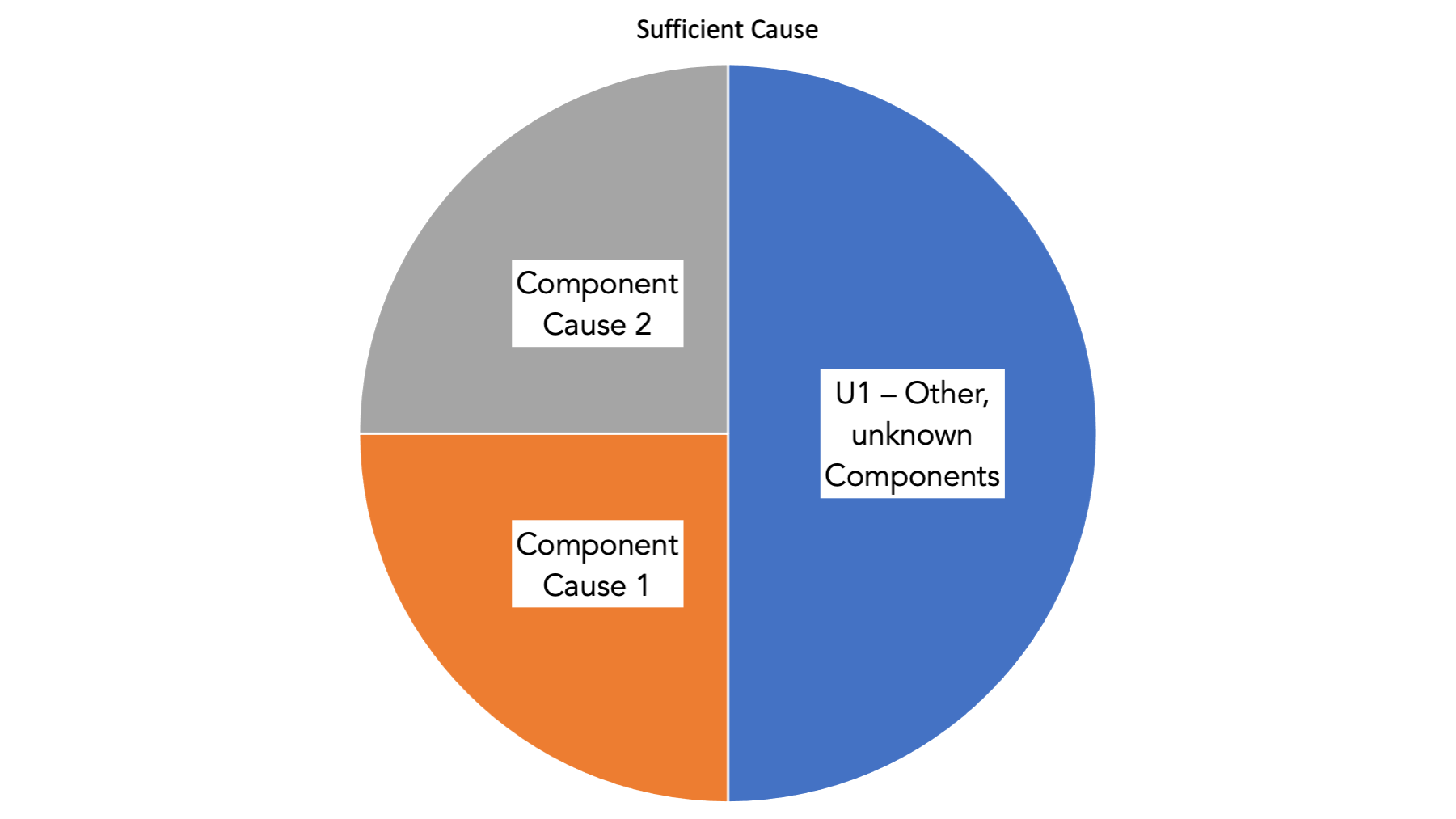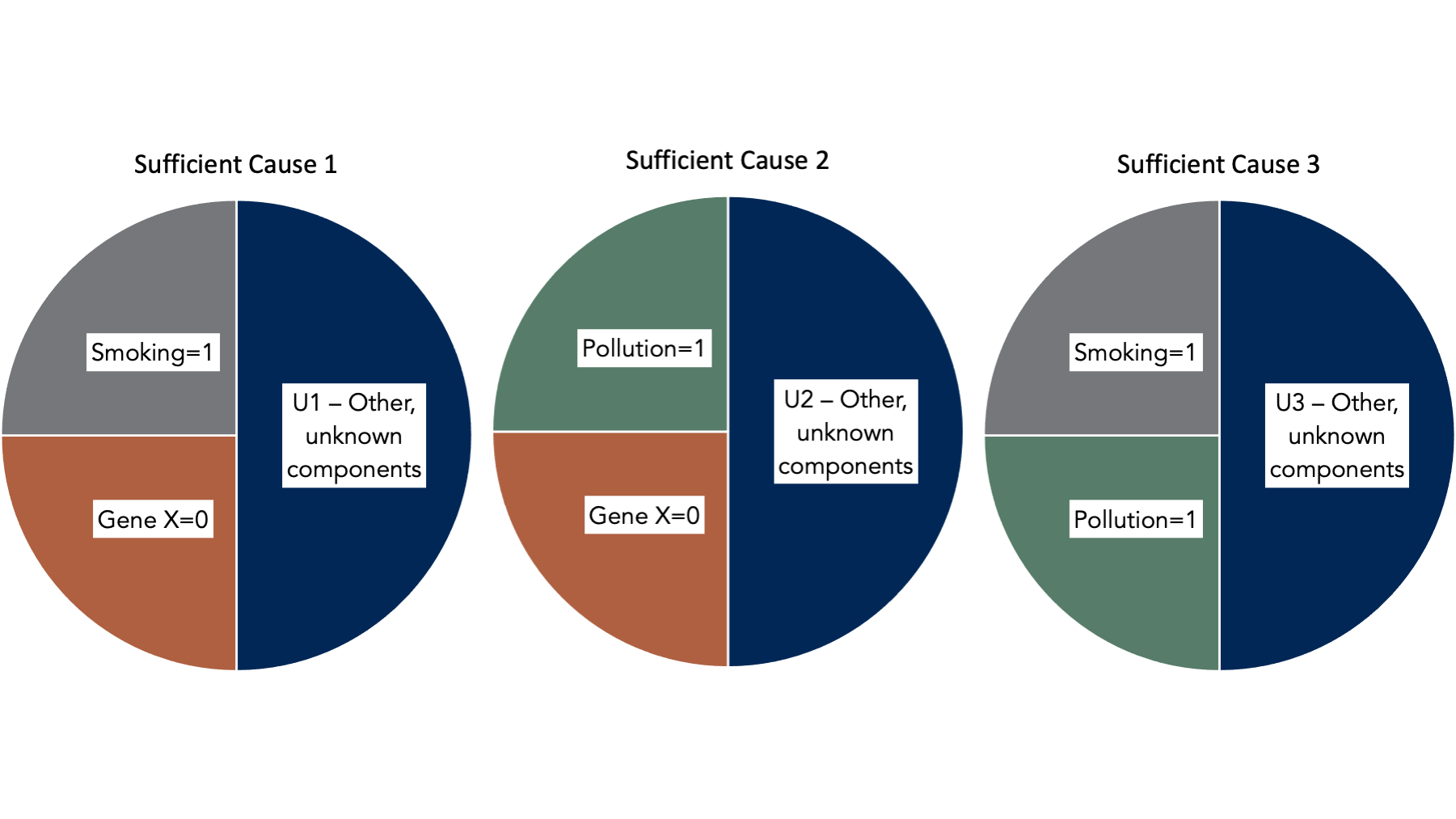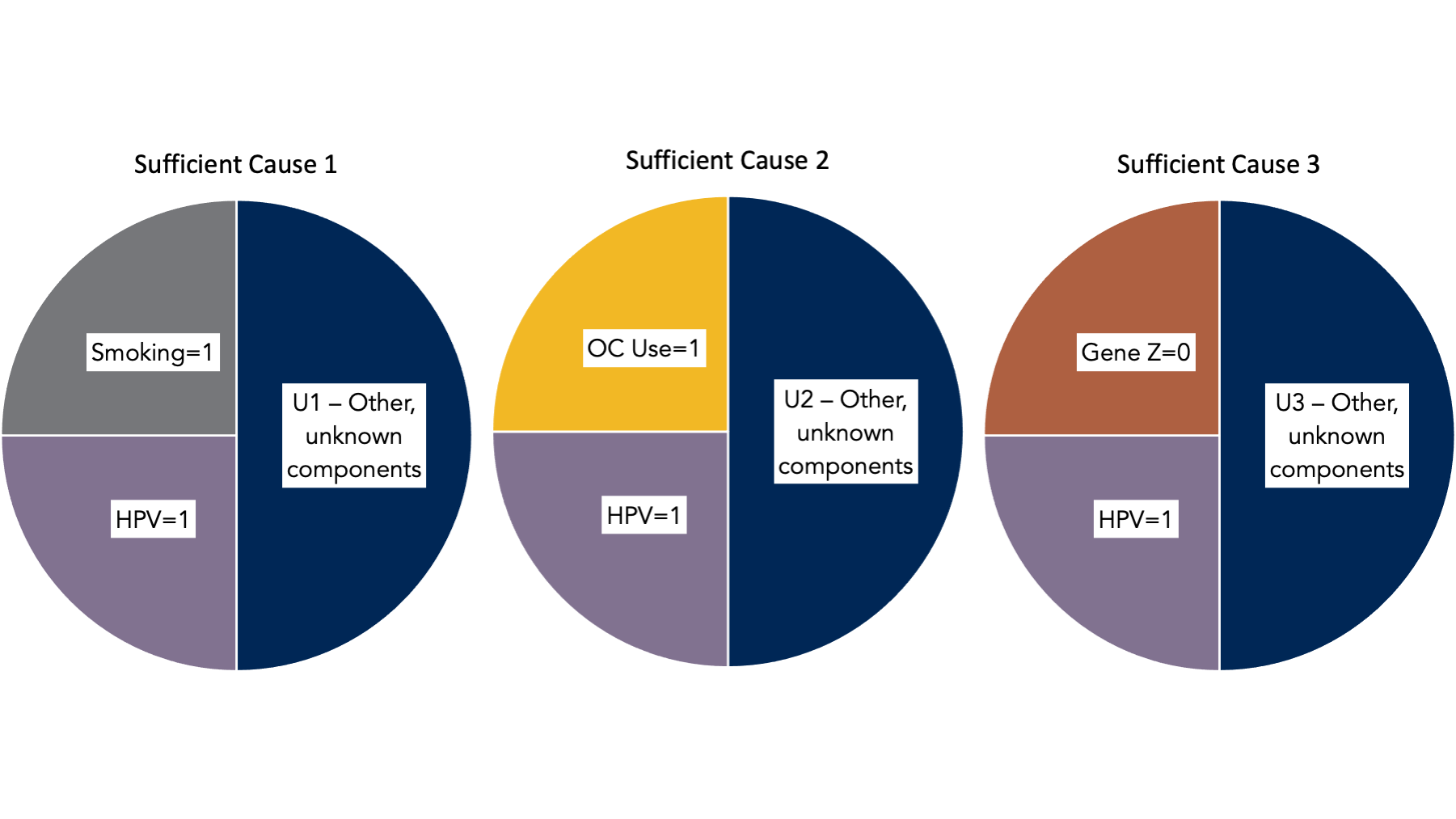43 Sufficient and Component Cause Diagrams
This chapter is under heavy development and may still undergo significant changes.
Sufficient and Component Cause Models (SCC) are sometimes called Rothman’s Model of Sufficient and Component Causes in honor of Ken Rothman, the epidemiologist who championed their use in the 1970’s.16 The SCC model uses diagrams that look like pies to to help researchers think through the various causes that could lead to an outcome of interest. They start from the effect and work backwards to a set of causes. They answers the question: “Given a particular effect/outcome, what are the various events that might have been its cause?”
In SCC models, the occurrence of an outcome is represented by one or more pie diagrams like the one shown below.

- Each segment of the pie represents one of the component causes of the outcome.
- Each pie chart represents a set of sufficient causes.
- By sufficient, we mean that each pie represents a complete causal mechanism that will result in the outcome of interest.
- According to SCC, the outcome of interest occurs at the moment the final component cause in a sufficient cause set occurs.
- By convention, sufficient cause pies often include a segment label with a “U” that represents our incomplete knowledge about all of the component causes that lead to the occurrence of the outcome.
To make this more concrete, let’s take a look at a simplified version of the causes of lung cancer as viewed through the lens of the SCC model.

Figure 43.1: Sufficient causes of lung cancer.
In the SCC diagrams above:
- There are at least three known component causes of lung cancer: Smoking, gene X, and pollution.
- There are at least three sufficient causes of lung cancer, which are labeled sufficient cause 1, 2, and 3.
- Sufficient cause 1 tells us that some number of people will develop lung cancer if they smoke, they do not have gene X, and they are exposed the component causes that make up U1.
- Sufficient cause 2 tells us that some number of people will develop lung cancer if they do not have gene X, they are exposed to pollution, and they are exposed the component causes that make up U2.
- Sufficient cause 3 tells us that some number of people will develop lung cancer if they smoke, they are exposed to pollution, and they are exposed the component causes that make up U3.
- Each component cause has a corresponding causal complement made up of the other factors that make up a sufficient cause set (i.e., a pie). For example, U3 smoking, and exposure to pollution represent causal complements in sufficient cause 3.
- Smoking, gene X, and pollution are not necessary causes of lung cancer. Meaning, there are sufficient cause sets that do not include each of them. For example, sufficient cause set 2 doesn’t include smoking.
This proposed SCC gives a more realistic meaning to the statement “smoking causes lung cancer,” and helps us address questions like, “my uncle smoke for 50 years and didn’t get lung cancer. So, how can you say that smoking causes lung cancer?” Or, “My aunt got lung cancer last year, but she never smoked a cigarette in her life. How can you say that smoking causes lung cancer?”
Smoking represents a component cause of lung cancer, but is neither a necessary cause of lung cancer, nor is it sufficient to cause lung cancer in the absence of other component causes.
Here’s another example – three sufficient cause sets for cervical cancer.

Figure 43.2: Sufficient causes of cervical cancer.
In the SCC diagrams above:
- There are at least three known component causes of cervical cancer: Smoking, gene X, Oral Contraceptive (OC) use, and Human Papillomavirus (HPV).
- There are at least three sufficient causes of cervical cancer, which are labeled sufficient cause 1, 2, and 3.
- Sufficient cause 1 tells us that some number of people will develop cervical cancer if they smoke, they have HPV, and they are exposed the component causes that make up U1.
- Sufficient cause 2 tells us that some number of people will develop cervical cancer if they use oral contraceptives, they have HPV, and they are exposed the component causes that make up U2.
- Sufficient cause 3 tells us that some number of people will develop cervical cancer if they have gene Z, they have HPV, and they are exposed the component causes that make up U3.
- Each component cause has a corresponding causal complement made up of the other factors that make up a sufficient cause set (i.e., a pie). For example, smoking, HPV, and U1 represent causal complements in sufficient cause 1.
- Smoking, OC use, and Gene Z are not necessary causes of cervical cancer. Meaning, there are sufficient cause sets that do not include each of them. For example, sufficient cause set 2 does not include gene Z.
- HPV is a necessary cause of cervical cancer. Meaning, every sufficient cause set includes HPV. Thus, HPV is considered a necessary cause of HPV.